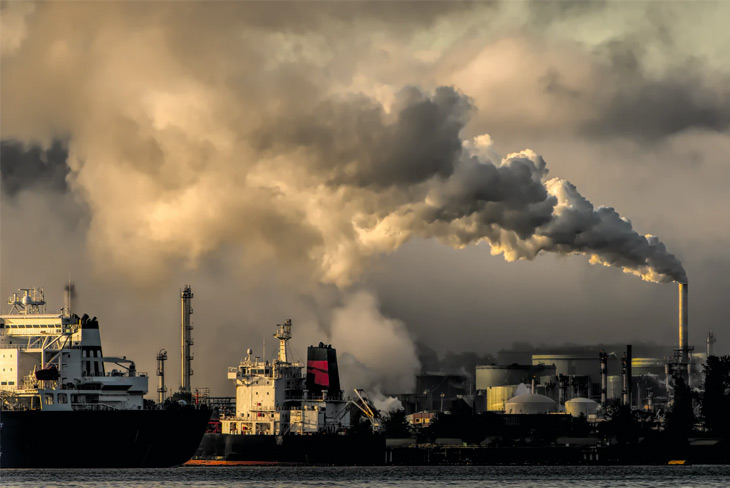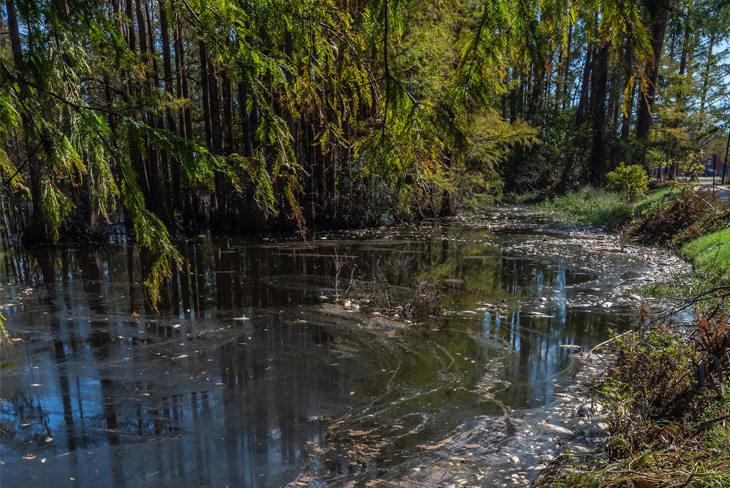Who is responsible for climate change?

Who is responsible for climate change? It’s a big question, and it doesn’t exactly have a straight answer. There are so many things to consider. All we know is that climate change is a serious issue – and one that is proving to worsen year by year.
The long and the short of it: climate change has come of human activity, meaning that every large multimillion-dollar company, country, politician, upper-class family, but also every individual has had a role to play. From fossil fuel emissions out of manufacturing factories to tossing your empty Starbucks cup on the pavement, we all are a little guilty for contributing to climate change.
This article is not here to point fingers. Instead, this article is here for individual accountability:
Fossil fuel companies & carbon emissions
When it comes to slapping the label of who is responsible for climate change, many would not hesitate to turn towards major fossil fuel companies. Fossil fuel companies’ main priority is to move oil, gas, and coal out of the ground to then feed back into our economy.
Oil and gas do more than just fuel our vehicles. Oil and gas are engrained in more aspects of our daily lives than one might think. In fact, these raw materials can be used in everyday household products, like deodorant, but they can be even used in MRI machines. Oil refining produces byproducts, which is then utilizes for manufacturing plastics, lubricants, tars, and more.
Did you know that baby products are even manufactured from oil or gas byproduct? This includes diapers, toys, and pacifiers.
This is all to say that everyday products that are consumed by everyday individuals are only made possible with byproduct from oil and gas. Moreover, gas is used to power our vehicles, and natural gas helps to heat our homes. As consumers, we contribute to the demand of these products by purchasing them. Major fossil fuel companies are responsible for a collective 2/3 of total global emissions of greenhouse gases. In retrospect, our economy has an addition for the oil and gas they produce.
L'Avenir de i'énergie
Alright, so we know now not to blame the buyer, not the dealer. But what else are we supposed to do? We are so dependent on oil and gas for the ways that we live everyday – what else could we use? Renewable energy may be the answer. Renewable energy has been taken from earth’s natural resources that are not exhaustible (which fossil fuels are!) and acts as an alternative to traditional energy means. Wind and sunlight are two examples, but they can also include:
- Solar, which is derived from the capturing of radiant energy then converted to electricity, hot water, and heat. Solar, however, tends to be significantly costly as an upfront expense.
- Wind, captured via turbines and turned into energy. However, it is difficult to capture wind energy anywhere but rural or remote areas.
- Hydroelectric, which is generated both in small scale and large-scale operations via turbines or huge dams. These, however, can disrupt waterways.
- Biomass, which is organic matter – like wood in a fireplace. However, there is not a lot of research into using biomass as alternative energy and very minimal technology.
Switching to alternative energy or renewable energy is a daunting concept, one that can provoke a lot of difficult transition but that may be the way to go in the foreseeable future. Renewable energy is being innovated everyday and may very well soon be the norm!
What you can do to fight climate change

We are all responsible for climate change in our own ways. What we purchase, what we do, how we live, etc. We buy the products that huge corporations mass produce. So how can we fight climate change on our own, with little steps at a time? Climate change poses a massive threat, and we are in desperate need of urgently reducing our carbon pollution and preparing ourselves for global warming. There are a few simple ways you can begin on your fight against climate change.
Carpool.
Carpooling or using public transit can reduce the number of vehicles on the road, and thereby reduce your emissions by using less gasoline. If you drive your kids to school, drive the neighbours’ kids, too, or swap every other day of the week! Ride in with coworkers or take the bus! Bike if you are feeling like getting a little more exercise in.
Learn more about green power.
Switch to low carbon dioxide emission electricity or “green power.” You can ask your local electricity provider about what options may be available to you.
Avoid “little trips.”
When you go out to do errands, avoid going out to the mall to grab that one thing. Instead wait for when you need to do multiple different things to spare yourself the amount of miles driven and save yourself the emissions. You can even combine trips with your household members or friends.
Educate yourself.
One of the best ways to understanding how you can reduce your carbon emissions is by better educating yourself on their impact. Check out the WWF’s work on climate change, watch a documentary with your loved ones, or get in touch with various climate volunteer groups. We are all guilty for having a role in contributing to climate change, whether that is due to the products we buy, the waste that we produce, the places/lengths that we drive, and so much more. While it may seem like this is the only way to drive, that simply is not true! Instead, there are so many other ways we can swap over to alternative energy, multi-use items, and consciously avoid increasing our carbon emissions as much as we possibly can. See how Panda7 is reducing its own carbon emissions by planting trees for every quote received and three for every policy purchased in our Giveback page.

